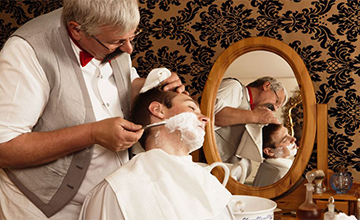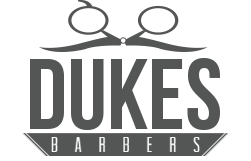
The Art of Wet Shaving
Using an open or cut-throat razor to shave will definitely give you the closest shave you have ever had and reduce the ‘5-o-clock’ shadow from appearing until much later in the day, but wet shaving is an art and one which has to be learnt through practise until experience is gained.
Finding a good barber shop which offers a wet shaving service can be amazing as they will alleviate the problem of you having to risk the numerous nicks and cuts while you learn the art of wet shaving, eliminate the problem of having to correctly sharpen your blade (this is an art in itself) and search around for the best possible razors, soaps, brushes, etc;
Your barber will firstly apply hot towels to prepare your skin and then build up a decent lather, which he will apply to your face ready for your shave and he will then commence your shave using a technique which he has years of experience and practise at. Several aspects are relevant in performing a decent and professional wet shave, such as the angle the razor is held at, whether you use an upward or downward stroke, the pressure applied to perform the shave, and even the type of material the razor is made from, so leaving it to the professional is usually the best option unless you personally have years of experience yourself.
Your barber will finalise your wet shave with some luxury post-shave products to leave your skin feeling smooth, soft and rejuvenated. The history surrounding wet shaving dates back to circa 1745 when barbers used razors, a brush, soap and towels, all of which were seen as very progressive in the era. Cut-Throat or Open-Razors were made with handles of bone, ivory or tortoiseshell and have now become very collectable.
A Hone, is a block of abrasive material, usually derived from naturally occurring minerals and used to sharpen barbers razors. Some synthetic hones are made from Carborundum, which is produced using Silicon Carbide. After using the Hone to sharpen the razor, barbers then used a Shaving Strop, which is a strap made from leather or canvas used to smooth the blade of the razor.
Shaving brushes were made from badger or boar hair, but are now made from synthetic materials and they usually have a bone handle. These brushes were used to apply the soap lather prior to shaving, and many barbers still use them today in traditional shaving.
